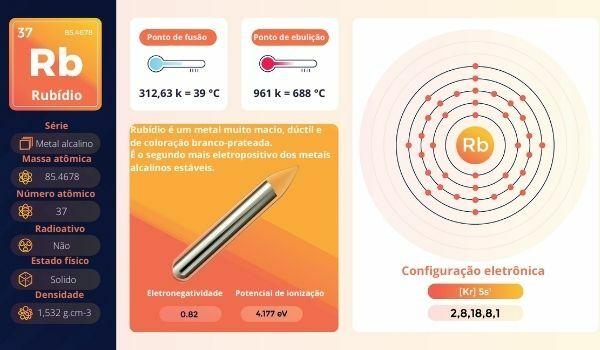You fungus are organisms that can be unicellular or multicellular, eukaryotic and heterotrophic.
They participate in the cycling of organic matter to the environment and, in addition, have food and pharmaceutical uses. However, they can also cause disease in humans.
see more
Biology teacher fired after class on XX and XY chromosomes;…
Cannabidiol found in common plant in Brazil brings new perspective…
Test your knowledge with the Kingdom Fungi exercises:
List of exercises – Kingdom Fungi
1) (PUC-RIO) As for individuals of the Fungi Kingdom, we can state that:
a) can produce antibiotics and carry out photosynthesis.
b) can form mycorrhizae and ferment
c) are exclusively unicellular and prokaryotic
d) are autotrophic and multicellular
e) they are eukaryotes and chemosynthetics
2) (Fuvest) In the group of fungi, close to 100,000 species are known. This diverse group includes species that
a) they are saprobic, fundamental in the cycling of nutrients, as they synthesize sugars from carbon dioxide in the air.
b) they are parasites, heterotrophic prokaryotes that absorb organic compounds produced by host organisms.
c) are edible, belonging to a group of primitive fungi that do not form fruiting bodies.
d) form, with the roots of plants, associations called mycorrhizae, mutually beneficial, by exchanging nutrients
nutrients.
e) carry out respiration, in the presence of oxygen, and photosynthesis, in the absence of this gas, being, therefore, facultative anaerobes.
3) (UFES) Dissolving a portion of Fleischmann yeast (bread yeast) in a little water and taking a drop of this preparation, between slide and cover slip, under the microscope, we will certainly find:
a) A type of single-celled fungus.
b) A type of filamentous fungus.
c) Colonies of spherical bacteria.
d) A whitish liquid, homogeneous in appearance, since this yeast is a chemical product that dissolves in water.
e) A type of mutant single-celled algae, unable to synthesize pigments
4) (PUC-RIO) Check the option that does NOT present a characteristic of beings belonging to the Fungi Kingdom.
a) They are autotrophic and carry out photosynthesis.
b) Produce antibiotics.
c) They are capable of carrying out fermentation.
d) Perform decomposition of organic matter.
e) Their cells do not contain chloroplasts.
5) (UFV) Look at the following figure that represents the structure of a fungus:

Regarding this structure, mark the incorrect statement:
A) During the process of sexual reproduction of many species of fungi, special hyphae are formed that grow in compact clusters forming structure III.
B) Multicellular fungi are made up of branched microscopic filaments called hyphae, which are the structures indicated in II.
C) Hyphae can be of two types: coenocytic hyphae, which are continuous filaments without transverse divisions, and septate hyphae, which have transverse walls.
D) The set of hyphae forms the mycelium, represented by structure III, which will constitute the body of the multicellular fungus.
6) (UDESC) Fungi are organisms that make up the Kingdom Fungi and have the following characteristics:
a) prokaryotic, photosynthetic and starch reserve cells.
b) eukaryotic, autotrophic and starch reserve cells.
c) prokaryotic cells, heterotrophic nutrition and glycogen reserve.
d) eukaryotic, heterotrophic and starch reserve cells
e) eukaryotic cells, heterotrophic nutrition and glycogen reserve.
7) (UFPB) About the representatives of the Fungi kingdom, it can be said:
i. Ascomycetes have coenocytic hyphae and lack an ascocarp (fruiting structure).
II. Basidiomycetes, in addition to the haploid and diploid phases, have a third dikaryotic phase.
III. Ascomycetes and Basidiomycetes have a haplobiont haplon life cycle.
Is (are) correct only:
a) II and III
b) I and II
c) I and III
d) I
e) II
8) (UESC) Mushrooms are highly nutritious. They present essential amino acids and are rich in vitamins, fibers, proteins, carbohydrates and sodium. Although sharing common aspects with other biological groups, fungi constitute a very peculiar group that is characterized, among other things, because:
a) They are achlorophyllous capable of carrying out photosynthesis.
b) They exhibit, in multicellular forms, the mycelial structure that emerges from the organization of hyphae.
c) They usually present multinucleated cells without cell walls.
d) They reproduce by spores and develop life cycles with alternation of generations.
e) They depend on heterotrophic nutrition, behaving like ingesters.
9) (UFMG) All alternatives present activities that some fungi can perform, EXCEPT:
a) Produce alcohol in the industry.
b) Produce antibiotics to control diseases.
c) Produce enzymes for biological control.
d) Produce glucose for energy.
e) Promote decomposition of organic matter.
10) (CESGRANRIO) Check the option that presents a characteristic absent in Kingdom Fungi:
a) Asexual reproduction.
b) Anaerobic respiration.
c) Prokaryotic cell.
d) Heterotrophic nutrition.
e) Mutualistic relationship.
feedback
- B
- d
- The
- The
- The
- It is
- The
- B
- d
- w
See too:
- Kingdom Animalia: Invertebrates and Chordates
- Exercises on Kingdom Monera


